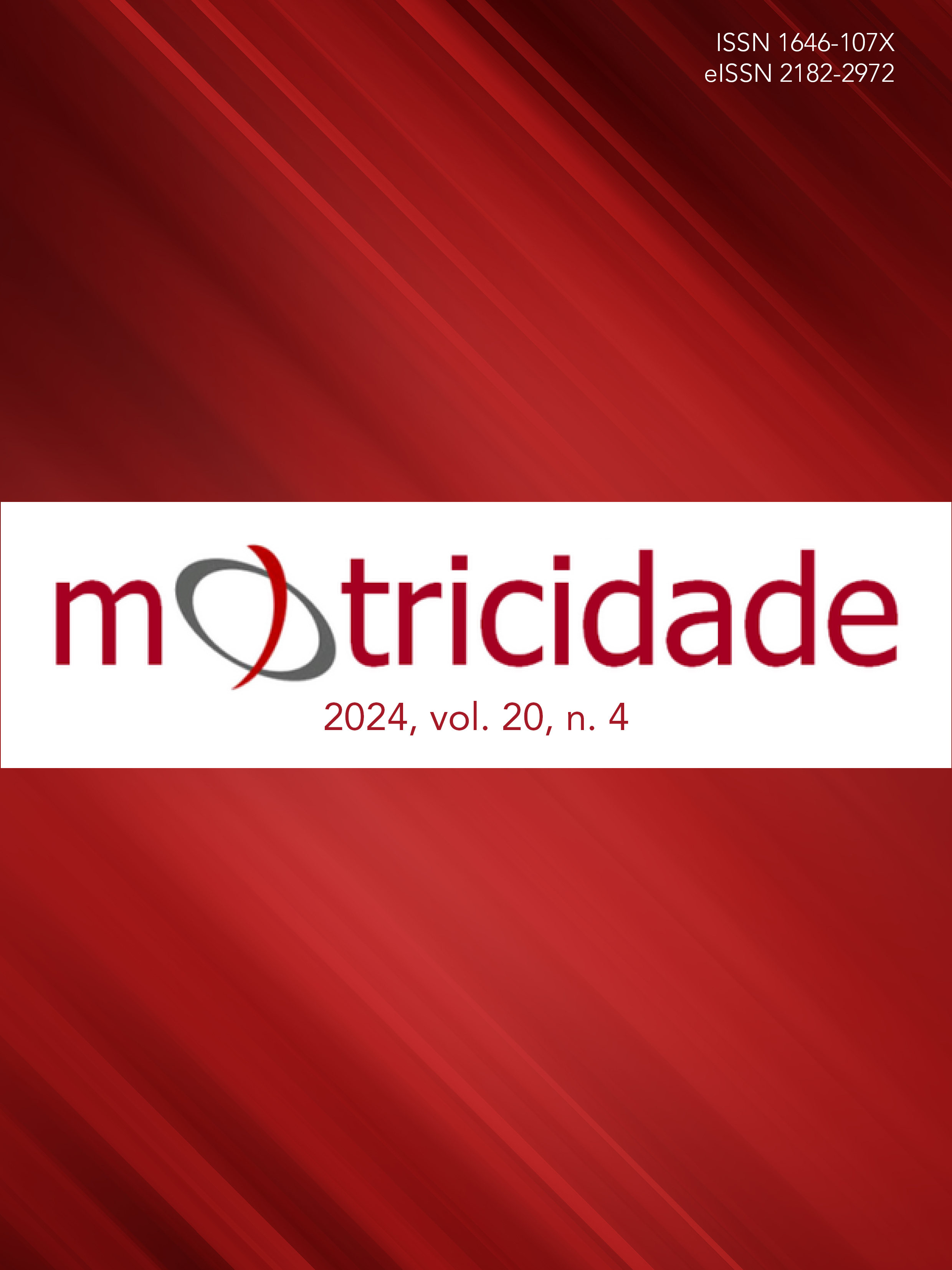High-intensity bodyweight interval training increases strength and functional capacity in older adults
DOI:
https://doi.org/10.6063/motricidade.35011Keywords:
Functional fitness, interval training, bodyweight, Aging, Older adultsAbstract
The present research aimed to analyse the effect of HIIT with body weight on strength and functional capacity parameters in older adults. Sixty sedentary older people were randomised into the control group (n=30) and the training group (n=30), who performed the bodyweight interval training program. The training consisted of 3 weekly sessions of 30 minutes in duration, performed on alternate days, consisting of warm-up, central part, and cool-down. The main part of the training session was 20 minutes long, totalling 20 work cycles. Each work cycle comprised 30 seconds of stimulation and 30 seconds of passive recovery. To verify the functional variables of older adults, the 5-time sit-and-stand test, the 10m walk test, the Timed Up and Go (TUG), and the 1RM test were used to determine maximum muscular strength. The results showed significant differences (p<0.05) for the TUG (p=0.0001), 5TSTS test (p=0.009), and maximum reproduction for elbow flexion 1RMEF (p=0.05) for the group Training. High-intensity interval training with body weight improves the functionality mainly of the lower limbs, impacting the performance of instrumental activities of daily living and gait performance, generating autonomy and independence of movement.
Downloads
Published
Issue
Section
License
The authors of submitted manuscripts must transfer the full copyright to Journal Motricidade / Sílabas Didáticas Editions. Granting copyright permission allows the publication and dissemination of the article in printed or electronic formats, and copyrights start at the moment the manuscript is accepted for publication. It also allows Journal Motricidade to use and commercialise the article in terms of licensing, lending or selling its content to indexation/abstracts databases and other entities.
According to the terms of the Creative Commons licence, authors may reproduce a reasonable number of copies for personal or professional purposes, but without any economic gain. SHERPA/RoMEO allows authors to post a final digital copy (post-printing version) of the article on their websites or on their institutions' scientific repository.


